|
When my friend Joan told me about a new book club, I was jubilant! I had never been in a book club and here was one that would meet in the Las Campanas clubhouse, less than a mile from where I live. My euphoric bubble burst when Joan added, “I’m afraid it’s filled.” A few nights later, dinner companion Tori said, “Shirley, my Spanish professor at the community college told me that she’s facilitating a book club at Las Campanas. If you can join, you should. She’s fabulous!” After a flurry of emails – first to facilitator Sharon Franco and then to the book club co-founder – I was invited to join the Las Campanas University Book Club when it was one-third of the way through a list of six books for its Saints and Sinners series. They had already discussed Camus’ The Fall and The Magician of Lublin by Isaac Bashevis Singer. Next up for discussion: The Power and the Glory by Graham Greene. “Our theme for the Saints and Sinners series is,” wrote facilitator Sharon Franco, “‘What does it take to be good?’ or maybe ‘What does it mean to be a good person in this complicated world?’ or maybe even, ‘If we’re not good, are we bad?’ Each of the six books we’ll be discussing will explore this theme in its own way, but each book has its own rich context, and we’ll definitely take that into account as well in our discussions.” Despite my delight and longing to stretch both mind and heart, my stomach was churning. I’d been a history, not English or American Lit major. A couple of weeks before joining the club, I received this heart-warming email from Sharon: Hi, Shirley, Welcome to the group! I’ll send you soon the materials I sent out for the first two books to give you some idea of what we talked about if you want to read or reread those books. In our upcoming discussions we may refer back to these earlier readings and authors occasionally for comparison/contrast purposes. But no problem if you simply want to jump in with the rest of the books on the list, beginning with the Graham Greene. So glad to have you join us! Best, Sharon In her pre-meeting questions, Sharon wrote: “Once again, as with our first two readings, we have a flawed protagonist. Inevitably you will, as before, have strong feelings about him, positive or negative. This time, in addition to evaluating his behavior and his character, please think about the context Greene has placed him and consider why Greene might have chosen such a character in such a context in this novel, considered by many to be his best. What do you think Green was exploring/investigating/examining in this work?” Any qualms I felt initially dissipated as I found myself thoroughly engaged by Sharon’s provocative questions and riveted by the insights of other members of the group. Our two-hour meetings were a combo of in-person and Zoom, which Sharon deftly handled. Meeting once a month, we concluded the Saints and Sinners series with a discussion of The Painter of Battles by Arturo Perez-Reverte. “Be aware,” Sharon said in preparation for discussion, “that some readers find the beginning of this novel a little slow (most of his books tend to be fast-paced intrigues), but I assure you that things pick up soon enough, though this isn’t a book of action so much as a kind of moral/philosophical inquiry into war, violence and the moral dilemmas a war correspondent faces.” Earlier in the series, we’d discussed Home by Marilynne Robinson and Purple Hibiscus by Chimamandu Ngozi Adichie. In discussion questions for Home, Sharon included a two-minute tribute to the author by Barack Obama and a review/discussion of Home in The New York Times. In supplementary material for Purple Hibiscus, she mentioned a TED talk by Chimmamandu on why everyone should be a feminist. “She’s won the Orange Prize and the MacArthur Foundation Genius Award, among others. She’s a kind of celebrity, but mainly because she’s a highly respected author.” Based on our votes and preferences, we took a summer break and picked up again in September with a new series of six works featuring “The Novella.” Sharon scheduled three meetings in the fall (September, October and November) and three months in the spring (February, March and April). Although we’re still known as The Las Campanas University Book Club, we now meet in Sharon’s casita, which is equipped with Zoom, and our membership has expanded to include persons outside of Las Campanas, including a few from out of the state! The six novellas we read were loosely connected to the theme of family relations, particularly involving spouses, lovers, parents and children. “We will also be examining the novella form itself,” wrote Sharon, “characterized by Joyce Carol Oates as follows: “Henry James described the novella as the ‘the blessed form.’ It is also a very difficult, even hazardous form, neither a novel in miniature nor a pumped-up short story, but something quite distinct, if indefinable, with its own particular challenges and possibilities.” Here are the six novellas: The Wife of Martin Guerre by Janet Lewis; The Lover by Marguerite Duras; The Age of Grief by Jane Smiley; Tell Me a Riddle by Tillie Olsen; No One Writes to the Colonel by Gabriel Garcia Marques; and The Lost Daughter by Elena Ferrante. After last summer’s break, we welcomed more new members and based on our preference for focusing on “The Power of Place,” Sharon selected another series of six novels: September – Snow Country by Yasunari Kawabata October – Moshi Moshi by Banana Yoshimoto November – The Bay of Noon by Shirley Hazzard February – The Pick-up: A Novel by Nadine Gordimer March – Mink River by Brian Doyle April – Open City by Teju Cole “I had a hard time choosing among all these great titles,” Sharon wrote, “but I opted for variety. This is a mix of 20th and 21st century works, male and female authors, and a variety of styles and settings.
“I chose to begin with Kawabata’s Snow Country in part because it’s the shortest of all the books and thus I’m hoping it shouldn’t be too hard for you to get it and read it before our first meeting. I’m thinking that it’s a work you might find enigmatic (or even off-putting – I’m anticipating some of your comments : ), which is in part a cultural issue. I’ll be sending out more material about it later, but as you read, think about the haiku form (Nobelist Kawabata is celebrated for bringing the haiku form into fiction), concentrate on the intense descriptions of setting, and consider the way the emotions conjured by setting are related to the characters; you’ll notice that plot isn’t a major factor here exactly. I’m hoping reading this work first will hone your sensibilities for later works, and also that you’ll find it soothing to read of snow and cold during this long heat spell.” In April, we wrapped up our series on “power of place” with Teju Cole’s provocative Open City. After a summer break, we’ll pick up again with a new theme and a list of Sharon’s picks for discussion. Stay tuned!
0 Comments
For book lovers, the Tucson Festival of Books is a marvel! For starters, it’s FREE. And for the most part, it’s outside on the beautiful University of Arizona campus where, on a single weekend, 100,000 bibliophiles from all over the world can wander at will under sunny skies. But this past March, a cold wind and unrelenting rain quashed plans to set up our New Mexico Book Association booth on Friday morning, the day before the Festival. The only thing we could do, having driven nearly eight rain-fraught hours to reach Tucson, was unload NMBA Book Chair Paula Lozar’s Toyota 4Runner. After carrying boxes of books, banners and a table into our rain-swept booth, we threw a protective tarp over everything and left with a fervent hope for clear weather. Early the next morning, under a sunny sky, we wiped down tables, unpacked books, unfurled banners and completed set up minutes before the Festival opened to the public. Our NMBA booth #150 was one of more than 200 white-tented booths showcasing books of all sizes, quality and prices. A collectible, rare-book booth offered books costing as much as $4,000! Midst the sprawl was a children’s section and at least one booth dedicated to Young Adult books. On one side of us was a publisher that helps writers who want to self-publish; on the other side, an inter-faith group offered books on mind, body and spirit. We displayed 45 books by our member authors. A big seller was The Adventures of Santa Fe Sam, a charming children’s book about a prairie dog. Many who stopped by our booth wanted to purchase a book from the author or publisher who was standing in front of them. I asked one passerby what she liked to read and when she said, “biography,” I told her about Banged-Up Heart. She picked up the book from the display, read the back cover and said, “I want to buy your book.” Knowing that readers at the Tucson Festival cannot live on books alone, organizers placed food courts and snack areas in strategic spots. Many offered multi-national dishes – Indian and Mexican as well as Southwestern – but the food lines were, at times, daunting. A great find for coffee and a sandwich was Subway inside the nearby Student Union. Off to the side near the Student Union, guitarists and other musicians played non-stop. Inside the Student Union and other venues, people stood in lines for up to two hours to hear authors talk about a host of subjects. My friend, New York Times best-selling author Anne Hillerman, joined two other mystery writers to discuss character evolution or how to keep a reader interested in a character featured in a book series. On Saturday afternoon, I left booth #150 to hold a place in line for Frank who had left to play golf but planned to get back in time to hear journalist and author Tim Alberta (The Kingdom Power and the Glory) discuss the GOP’s Evolving Base with author and ABC News chief Washington correspondent Jonathan Karl and Republican pollster Patrick Ruffini. In line, I started talking with a couple of women – Joan from South Dakota and her friend Ursula from Tucson. When they found out I was an author, they asked how they could get my book. I offered to hold their places in line while they dashed to booth #150 to buy my book. By the time they got back, I was inside the venue, saving front-row seats for the four of us. Initially, I’d planned to hold a place in line for Frank and return to the NMBA booth but I’m glad I stayed for the mind-blowing discussion by the three panelists. The next day, Frank attended two more sessions featuring Tim Alberta and others discussing “Out of View Political Control” and “Religion’s Grip on Politics.” Early Sunday afternoon I left Booth #150, pulling a wagonload of books and display signs to the Indie Pavilion for Fiction and Nonfiction Authors. (Indie authors are those who have been published by a publisher who is not one of the Big Five: Simon & Schuster, Penguin Random House, Harper Collins, Hachette Book Group, and Macmillan.) Notified in December that my memoir had been selected for the Pavilion, I arrived with books in hand and registered off-site on Friday, selecting my table based only on the fact that the sun wouldn’t be in my eyes. Hours later, when I found the Indie Pavilion, I discovered two huge barrels of water adjacent to my table, anchoring the Pavilion tent. Thinking they might block me from the view of walkers passing by, I wished I’d selected another table. Fortunately, they weren’t a deterrent.  Much to my surprise and delight, Ursula whom I’d met the day before while waiting in line, brought a clutch of friends to meet me. Turned out it was her Tucson book club. When one of them asked if I would return to Tucson to discuss my book with them, I told her about the Sedona book club that had visited me in Santa Fe. “Let’s take a trip to Santa Fe to see Shirley and discuss her book,” she crowed. “That would be great!” I said. “You should feel good about being in the Indie Pavilion,” Hillary, the Indie honcho said when I introduced myself. “We had 220 submissions for 100 spots. And most of them were memoir and poetry. Of course, we couldn’t have just memoir and poetry because we wanted a diverse representation of Indie authors. So, we had to make tough decisions.” “I was surprised my book was selected because it’s seven years old,” I said. “There was a SNAFU on our part. Every submission was supposed to have been published in the last two years but that copy got inexplicably dropped. So, Shirley, you should feel really good.” I did, and I do. Being selected for the Indie Pavilion was an honor, not to mention an opportunity to sell a few books. Kudos to Frank who came up with a unique display sign: Banged-Up Heart – Ask Me Why? Billy the Kid (1859-1881) We were a couple of hours south of Santa Fe when we found ourselves driving through Fort Sumner. A one-time military fort that imprisoned thousands of Navajos and Mescalero Apaches in the 1860s, Fort Sumner today is a dusty nondescript village punctuated with billboards advertising the grave site of famed outlaw William H. Bonney known as Billy the Kid. “Let’s take a look,” Frank said. I was game. According to one account, the federal government closed the fort in 1868 and sold the buildings to a prominent New Mexico landowner, Lucien Maxwell. Maxwell’s son befriended Billy the Kid and it was in his house that Billy was fatally shot by Sheriff Pat Garrett in 1881. After a few false starts, we found an old military cemetery behind the locked-up Fort Sumner Chamber of Commerce office. Walking across the hard-packed earthen pathway, we met up with Billy the Kid’s “elusive” tombstone. Stolen twice – first time in 1951 (recovered 26 years later in Texas) and again in 1981 (recovered four days later in Huntington Beach, California!) – it now sits in an iron cage at the foot of what may or may not be Billy’s grave. Born William H. Bonney, Billy the Kid’s tombstone includes the names of his PALS, Tom O’Folliard and Charles Bowdre. In 2010, New Mexico Governor Bill Richardson, his last day in office, denied a request for a posthumous pardon of Billy for the murder of Sheriff William Brady, citing “historical ambiguity.” Impressive Holiday Inn Express in Snyder, Texas Less than a year old, this hotel rates five stars: Clean, bright and with bedside lamps we could read by! The fitness room, small but covered with a cork floor and equipped with a treadmill, elliptical, floor mats and a wall of weights struck me as perfect for an early morning workout. And the breakfast omelet was delicious. I’m not holding management responsible for the young hooligans who pulled the fire alarm just before bedtime. Dinner in Snyder, Texas Thirsting for margaritas, we found BIG, delicious ones at Taqueria Guadalajara where they served water in blue-tinted Coca-Cola glasses, salsa with homemade chips and delicious chicken enchiladas.
Cadillac Ranch Not far out of Houston, en route back to Santa Fe, we stopped for an up-close look at Cadillac Ranch. In 1974, a billionaire Texas landowner hired a group of Hippies from San Francisco to create art on a piece of his property near the highway. Endorsing their plan, he purchased eight Cadillacs in a variety of styles and colors and buried them at a 45 degree angle with their fins pointing skyward. He later invited the public to enter the property and remove pieces of the cars as souvenirs. Thirty years ago, when Frank first laid eyes on the cars, they looked like Cadillacs. Today, the skeletal remains have been spray-painted in layers of neon. Out of a nearby trailer, you can purchase one or more aerosol cans and go at it. Buc-eefied in Ennis, Texas
We were on the lookout for Buc-ee’s (mascot is a beaver) and found it in Ennis, Texas. Larger than Sam’s Club, Buc-ee’s is a huge emporium with offerings of fuel and electric vehicle chargers outside (no 10-wheelers allowed) and inside, a smorgasbord of snacks, brisket, baked goods, tacos, fresh sandwiches, souvenirs, and the added bonus of clean restrooms with traffic controllers to keep the crowds moving apace. After loading up with a chicken wrap, brisket and drinks, we were dismayed to find no place to sit down and eat! So, we grabbed a bunch of napkins and headed to our SUV for lunch. 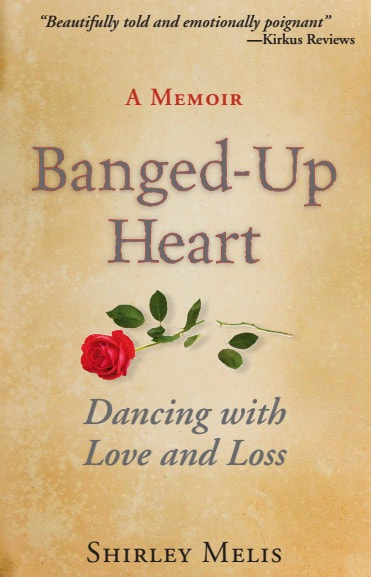 One of the five or six biggest book fairs in the world is the Tucson Festival of Books, which attracts 100,000 visitors over a single weekend in March. The festival, held on the beautiful campus of the University of Arizona, is FREE. For a third year in a row, the New Mexico Book Association will have a booth on the campus mall, displaying member author books. Last year, someone who visited the NMBA booth told me she had presented her book in the Indie Author Pavilion. You might ask, what is an Indie author? An Indie author is someone whose book is published by an independent (or “indie”) publisher that is not part of a large corporation or conglomerate, like the Big Five publishing houses: Penguin/Random House, Hachette Book Group, Harper Collins, Simon and Schuster, and Macmillan. “Keep your eye on the festival website for an announcement asking indie authors to submit their books for consideration,” she said. I did. And in October I submitted Banged-Up Heart. If the festival had a panel on grief and resilience, I thought I might have a chance to participate. Later, an author friend who lives in Tucson told me, “The Festival likes recently published books.” I swallowed my disappointment, as Banged-Up Heart would be seven years old in 2024. In December, I received a “thank you for submitting your book” followed by “we had a fantastic response from indie authors with over 175 books submitted for review. With so many books, our team had to make some very hard choices regarding the authors to invite to represent Indie Authors at the 2024 Tucson Festival of Books.” I thought they were letting me down gently and was not prepared to read at the end of the second paragraph: “Congratulations, your book has been selected to participate in the Festival.” 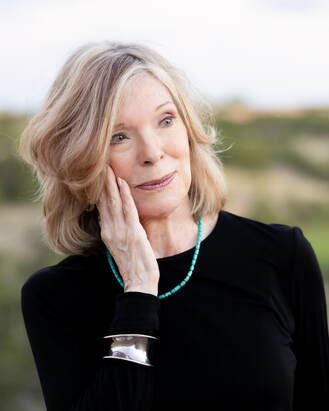 I will be hosted in the Indie Author Pavilion for Adult Fiction and Nonfiction on Sunday, March 10th for three hours, 1:30 – 4:30 p.m. One of twenty authors showcasing our books, I look forward to discussing my memoir with anyone who’s interested. Of course, I’ll have copies to sign. If you plan to be in Tucson for the Festival, be sure to look for me. To find me listed in the Festival program, Google 2024 Tucson festival of Books, click on Authors and then click Indie Authors. I’m in the middle of the pack. Before my stint in the Indie Pavilion on March 10th, I’ll be in the NMBA booth on Saturday, March 9th, and Sunday morning. Praise for Banged-Up Heart: Melis’ stirring story is beautifully told, both philosophically reflective and emotionally poignant. Her account is also remarkably candid. Despite the heartbreaking losses she endured, she manages to produce a life-affirming memoir detailing personal triumph. -Kirkus Reviews An intimate look at the power of love, filled with honesty and passion. Banged-Up Heart is the best memoir I’ve read this year. Bravo. -Anne Hillerman, New York Times best-selling author of The Way of the Bear and soon-to-be-released Lost Birds Shirley Melis tells a love story filled with joy, heartache, and shocking honesty that makes Banged-Up Heart a page-turner. -Sally Armstrong, author of Uprising: A New Age is Dawning for Every Mother’s Daughter Banged-Up Heart invites us into an intimate, compelling story of deep love, one found unexpectedly after a painful time of raw widowhood. In meticulous detail, Shirley Melis crafts an uplifting testament to her own persisting determination in the face of devastating tragedy. Her courage to open herself again despite this confrontation with double loss is a shining example of human resilience at its most transcendent. -Barclay Braden, PhD, psychologist, and author of Faith at Hand: Finding My Way to Depth Journaling In Banged-Up Heart, Shirley Melis lays bare the heartbreak of being widowed twice in four years. But that’s just the start. Her candor and insights, delivered in crisp, unsentimental prose, will pull you into this inspiring account of love, loss, and resilience. -Patricia Galagan, fine-art photographer, writer, and author of Fire Ghosts On the morning of January 21st, I woke up to a dusting of snow and held my breath. With an overcast sky and outside temperatures in the low 30’s, the New Mexico Book Association’s afternoon Winter Fiesta might be a Winter Disasta! By late afternoon, the weather was holding as we welcomed close to fifty celebrants to the NMBA’s Winter Fiesta and 30th anniversary at The Club at Las Campanas in Santa Fe. A Brief History Thirty years ago, a small group of publishers banded together to form the NMBA for the purpose of discussing publishing issues. Their mission: “To preserve and perpetuate the BOOK as a repository of the wisdom of the past, the essence of the present, and a guide to the future.” Reflecting the mission was the logo: a symbol of the sun with its horizontal rays opening like the pages of a book. Thirty years later, the mission and logo remain intact but membership has undergone a dramatic change. After its founding, the NMBA became a pioneer among statewide publishing groups by opening is membership to all individuals, businesses, and institutions professionally involved with books: writers, editors, proofreaders, book coaches, illustrators, literary agents, designers, narrators, publicists, marketer, journalists, reviewers, librarians, and, of course, publishers. Today, the NMBA is the only statewide nonprofit that serves all book professionals, and we are one of the country’s most active book associations. Since January a year ago, our membership has grown by a whopping 74 new members! Together with those who have been with us for many years, NMBA members hail from 31 cities and towns in New Mexico and ten other states. What We Do Throughout the year, the NMBA offers workshops by experts on topics that members want to know more about. The most popular last year addressed the impact of artificial intelligence on the creative writer. Book sales and events showcase member author books at a variety of sites, including the Tucson Festival of Books in March, which attracts one hundred thousand visitors over a single weekend. Honoring books is the NMBA’s one-of-kind competition, the Southwest Book Design and Production Awards. Open to authors from eight states, SWBDA celebrates winners at the NMBA Summer Gala. Certificate of Appreciation In the midst of Winter Fiesta, the NMBA Board surprised Treasurer Paula Lozar with a Certificate of Appreciation, acknowledging her many years of service to the organization. Paula joined the Board as a member-at-large in 2008 and never left, serving in every office of the Board. Each Whereas in the Resolution of Appreciation celebrated a facet of Paula’s exemplary service, including this one: Whereas, whenever the Board is unsure of any important fact or proposed initiative, they simply as Paula Lozar and she graciously tells the Board what to do. Richard Harris Award The Richard Harris Award was founded in 2012 to honor the memory of the late NMBA president, Richard Harris, who died in 2011 at the age of sixty-four, having written more than 250 books. He was widely considered the preeminent author of guides to the American Southwest and Mexico. People who were privileged to know Richard Harris say he was an immensely talented writer who loved books and everything about them. Equally at home designing books and discussing copyright questions, he lectured widely at writing and publishing conferences The NMBA presents the Richard Harris Award annually to the author of a book whose excellence in writing, editing, design, production and lasting influence in New Mexico exemplifies the ideals of publishing to which Richard Harris devoted his writing career. On Sunday, it gave me great pleasure to announce the 2023 Richard Harris Award, a beautiful book of poetry and stories entitled Sánii Dahataał The Women Are Singing by Luci Tapahonso, inaugural Poet Laureate of the Navajo Nation. In her book, Luci shares memories of her home in Shiprock, New Mexico, and of the places and people there. Through these celebrations of birth, partings and reunions, she displays her love of the Navajo world and her resonant use of language while inviting the reader into her culture of familial warmth and support through stories that keep the past alive.  It was only after Luci won the 2023 Richard Harris Award that we asked her to be our keynote speaker and when she agreed, we were thrilled. Luci’s journey is remarkable. Born on the Navajo reservation in Shiprock, New Mexico, she learned English as a second language after her native Navajo. After graduating from Shiprock High School, she began her studies at the University of New Mexico where she intended to study journalism and become an investigative report. Today Luci is University of New Mexico professor emerita of English Literature. She has published three children’s books and six award-winning books of poetry and taught at the universities of Kansas, Arizona, and New Mexico. After I presented Professor Tapahonso with the Richard Harris Award, Luci read from her many books, moving the audience to tears. It was a Winter Fiesta I will long remember. Ancient Babylonians – the first people to make New Year’s resolutions some 4,000 years ago – made promises to their pagan gods to pay their debts and return any objects they had borrowed. For them the new year began in mid-March, crop planting time.
In Rome, emperor Julius Caesar established January 1 as the beginning of the new year (46 B.C.), and Romans promised the deity Janus good conduct in the coming year. For early Christians, the first day of the new year became the traditional time of looking back at one’s mistakes and resolving to do better in the future. Today, despite religious roots, New Year’s resolutions are notably secular. Generally, we don’t make promises to gods. We make promises to ourselves with a focus on self-improvement. How successful are we in fulfilling our promises? Researchers report that while as many as 45% of Americans say they usually make New Year’s resolutions, only 8% are successful! Hoping to beat these dismal odds, here are my resolutions for 2024:
Note: Information about the history of New Year’s resolutions came from writer Sarah Pruitt’s online gem of an essay. It’s holiday time. I love this time of year – the lights on the Plaza in downtown Santa Fe, rooftop luminarias, the hum of excitement and getting together with friends. December is the month when I focus on my favorite charities and give what I can. Here are some of my favorites:
Arts Santa Fe Symphony and Chorus offers Santa Feans live classical music played and sung by top-notch musicians. This organization has a special place in my heart, in part because my husband, Frank, served as President of the Board (2017 – 2020) and as Interim Executive Director for nine months. I love the fact that music education is all-important to the organization. Members of the Symphony mentor aspiring musicians in Santa Fe public schools. And at least once a year, fourth graders fill the Lensic Theater in downtown Santa Fe for a free Symphony performance of Sergei Prokofiev’s Peter and the Wolf narrated in Spanish and English by author and storyteller Joe Hayes. Santa Fe Youth Symphony inspires young people throughout Northern New Mexico’s multicultural communities through music education guided by professionals and opportunities to perform. Humanitarian Doctors Without Borders is at the top of my list, especially during these days and weeks of endless war-related heartbreak. I also give to the Food Depot, the no-cost, healthful food bank for nearly 40,000 New Mexicans in nine counties in Northern New Mexico. Education Reading is Fundamental inspires the joy of reading in young children, sparking imagination and possibilities. As an avid watcher and listener of PBS, I support New Mexico PBS. And for the past two years, since it began, the Santa Fe International Literary Festival is on my must-support list. Animals The Animal Protection Society of Chapel Hill, NC, founded by my late husband Joe Nagelschmidt has evolved into Paws4Ever in Methane, NC. My donation carries a request to focus on adoption. I also support the Santa Fe Animal Shelter and with a caring eye on animals in the wild, I support the World Wildlife Fund. These are just a few of my favorite charities. Please share yours with me. One look at Tira Howard’s website and I was hooked. Urged by my publicist Mari to “refresh” my seven-year-old website with new photos by Tira, I shot off an email requesting a photo op in September and asked how long it might take.
“September 20th would be great! For authors in the past we would shoot for around 2 hours,” Tira responded. “What time?” I asked. “I’ll arrive close to sunset. That’s the best time to shoot, when we have Santa Fe’s dreamy afternoon light.” I liked the idea of being photographed at home rather than in a studio. At home is where I feel most comfortable and relaxed. I jotted the appointment in my calendar and forgot about it – it was more than a month out. Two days before my date with Tira, I was on Zoom with Mari, who lives in Spain. “Are you ready for your photo op?” she asked before our meeting ended. “Yes, but I have one burning question.” “What’s that?” “What about makeup?” “Have you discussed makeup with Tira?” “No, I thought she might bring someone to do makeup.” “No, it’s separate, Shirley. I have three names I’ll try to contact but I’m afraid you won’t be able to get anyone at the last minute.” “Yikes! If I have to do my own, do you have any advice for me?” “Yes, put on your usual makeup but add more on your cheeks and eyes. I think you’ll be just fine.” The afternoon of the scheduled shoot, the weather turned cloudy. In an email, Tira offered to re-schedule. I didn’t mind. I told her I was still trying to figure out what to wear! We settled on a date three days later when sun was forecast for the entire day. In response to my clothing quandary, Tira offered this advice: “Solid and neutral (black, white, khaki, olive, navy, cream, gray) colors are the easiest for graphic designers to work with unless you have already figured out design colors and would like to coordinate.” It was nearly 5 p.m. when, after brushing extra color onto my cheeks, I opened the front door to greet Tira. Taller than I’d expected, with dark hair to her shoulders, she wore a dark blue, shirred waist dress and black flats. No camera in hand. She flashed a smile that made me feel she was a friend or at the very least, someone I would like to get to know. Minutes before Tira arrived, I’d covered the back of our cream-colored sofa with a variety of neutral tops and a few scarves to go with black pants. On the nearby bar I’d stacked a small pile of necklaces and earrings. “What do you think?” I asked Tira, pointing toward the sofa. “I think you might wear all of them.” She looked at me and smiled. “We’ll have plenty of time for you to change.” I gave Tira a quick tour of the house, pointing out my office with my favorite red leather chair where I often write and the library. But it was outside where she wanted to start shooting. “There are so many possibilities!” Tira said, standing on the flagstone patio and taking in the view. “In front of the maple tree, out beyond your patio wall, on your portal with that fabulous sculpture on the wall, and in front of your house against the russet stucco. The natural light is perfect! Let me grab my camera and I’ll be right back.” Little more than an hour and several changes of tops and jewelry later, I took a seat in the library for the only indoor shot Tira took. A couple of weeks later, I received a link to Tira’s favorite photos taken during our photo op. Here are a few of them. Which ones do you like? How do you celebrate a big birthday in late October? “Keep it simple,” Frank said. With that, an unexpected invitation set our course. “Why don’t you celebrate your birthday with us here on Shelter Island?” Karla, who was on the phone with Frank, is the partner of Frank’s oldest friend, Jim. They (Jim and Frank) have known each other since second grade at the Lab School, University of Chicago. “Your grandson and his fiancée, who live in Manhattan, are welcome to join us and spend the night,” Karla added. When Frank mentioned the invite, sparks flashed in my brain. I thought of friends and relatives who call Manhattan home. We hadn’t seen them since the pandemic. In Sunday’s NYT, I’d just read about the Manet/Degas exhibition in the Metropolitan Museum of Art and who knew what surprises the Museum of Modern Art might hold. A lush multi-colored carpet of leaves covered our Santa Fe patio when we flew east to New York to celebrate Frank’s 92nd birthday. Landing at La Guardia, we snagged a yellow cab to East 66 th Street where we hunkered down in my author goddaughter Gitty Daneshvari's condo for three nights before catching the Hampton Jitney to Shelter Island. (She’s sold over 5 million copies of her 3-book School of Fear series, ages 9-12 years, worldwide!) Manhattan Highlights:The weather couldn’t have been better: sunny skies, crisp cool air, blooming white and fuchsia cyclamen beneath tall trees. Late one morning, fueled by chocolate croissants and cups of cappuccino, we walked to the Museum of Modern Art (MoMA) where Unsupervised, a huge floor-to-ceiling digital artwork erupted before our eyes. What would a machine dream of after seeing the collection of the Museum of Modern Art? The artist, Refik Anadol, used Artificial Intelligence to interpret and transform more than 200 years of art in MoMA. Other works that caught my eye: The Lovers by René Magritte and Henri Matisse’s famous and beloved Dance (I). Unsupervised, a digital artwork by Refik Anatolia Evening highlight: a heart-warming visit with my sister- and brother-in-law, Kerry and Dick Bessey, plus a bonus: margaritas made by Dick with fresh-squeezed lime and sublime tequila, the best margarita(s) I’ve ever tasted. (Know that in New Mexico, I’ve tasted a lot of margaritas!) Wednesday morning we met my college classmate Alice Harper for a tasty brunch of baked eggs at Le Pain Quotidien before trekking together to the Metropolitan Museum of Art. Alice, who volunteers at the museum, had offered to give us a private tour of the Manet/Degas exhibition when the museum is closed (on Wednesdays) to the public. Entering via a special entrance, we followed Alice through security and into an elevator that took us to the exhibition floor. Stepping out of the elevator, I was struck by the feeling that I had magically landed in a great, grand mansion filled with art. The stillness was deafening; the absence of crowds jostling for viewing position, palpable. Approaching the exhibition, we walked through a hall filled with sculptures by Rodin. The Hand of God in white marble took my breath away as did Rodin’s erotic Eternal Spring. Alice led us to a painting by Manet outside the featured exhibition: Mademoiselle V . . . in the Costume of an Espada. Depicting a matador, Manet’s female model flourishes a non-matador pink cape. Well into the exhibition, I discovered the same model in Manet’s The Spanish Singer and again, in his famed Le dejeuner sur l’herbe and Olympia. I was mystified by Degas’s painting of Monsieur and Madame Manet until I read that for reasons unknown, Manet slashed the right-hand side of the canvas showing his wife’s profile. That part of the canvas is empty, covered with what appears to be brown paper.
Shelter Island:The Hampton Jitney dropped us in Greenport where we caught a ten-minute ferry ride to Shelter Island. Near the eastern end of Long Island and accessible only by ferry. Shelter Island boasts a non-summer population of some 3,000 (15,000 during the summer). Compared with the sometimes frenetic energy of Manhattan, Shelter Island is an unspoiled gem of tranquility. Vast parts of the island are protected wetlands. In fact, The Nature Conservancy owns at least a third of the island to be protected in its wild state. Frank’s longtime friend, Jim Webster, a retired medical doctor who specialized in internal medicine and geriatrics while affiliated with Northwestern University Medical School and Northwestern Memorial Hospital, celebrated his 92nd birthday a few weeks before Frank’s. Seeing Frank and Jim together, I marveled that these two are just a few years short of being one century old! They are accomplished, each with a unique history and a generous heart. When I married Frank twelve years ago, I didn’t think of him as old. And I still don’t. I admit that too often I take his good health for granted but when we decided to marry, Frank promised that he would play golf until he was a hundred!
Saturday morning found us shopping at the local organic farm market for another birthday dinner , this one with grandson William. That afternoon, when William arrived with his fiancée Laynie, Jim offered William the key to Ruby and off we (Frank, William, Laynie and I) went, driving from one end of the island to the other. Racing along the roadway, William came to a sudden stop. In front of us, moving ever so slowly, was a large snapping turtle. We got out of the car and, stopping traffic, persuaded the turtle to turn around and head back into the swamp grass from which he’d come. The next day Frank and I flew back to New Mexico, having notched another significant birthday in Frank’s run toward 100.
Last month (August 23), authors, book designers and illustrators, publishers and avid readers gathered for the annual New Mexico Book Association’s Summer Gala. Thrilled by our record attendance (70) and energized by our program, I served as emcee, sharing the mic with Co-President Miguel De La Cruz and other members of the board. On the portal of Las Campanas in Santa Fe, acclaimed guitarist and singer Nacha Mendez performed for NMBA members and friends. Mendez, voted Best Female Vocalist in Santa Fe in 2009 and 2010, received the New Mexico Lifetime Achievement Award in 2018.
Weaving stories about being a robber gang’s lookout, stumbling upon a nine-bedroom house of his dreams that he would one day own, and taking teenagers from east LA into the hallowed library of Stanford University, Baca shared significant parts of his life and writing with Gala attendees.
|
Author BLOG
I'm Shirley Melis. You may know me as Shirley M. Nagelschmidt, Shirley M. Bessey and now, Shirley M. Hirsch. Each reflects a particular phase of my life. Banged-Up Heart is a slice of my life's journey and in telling my story, I'm giving voice to my long silent "M" by reclaiming my maiden name, Shirley Melis. Archives
January 2024
Categories
All
|



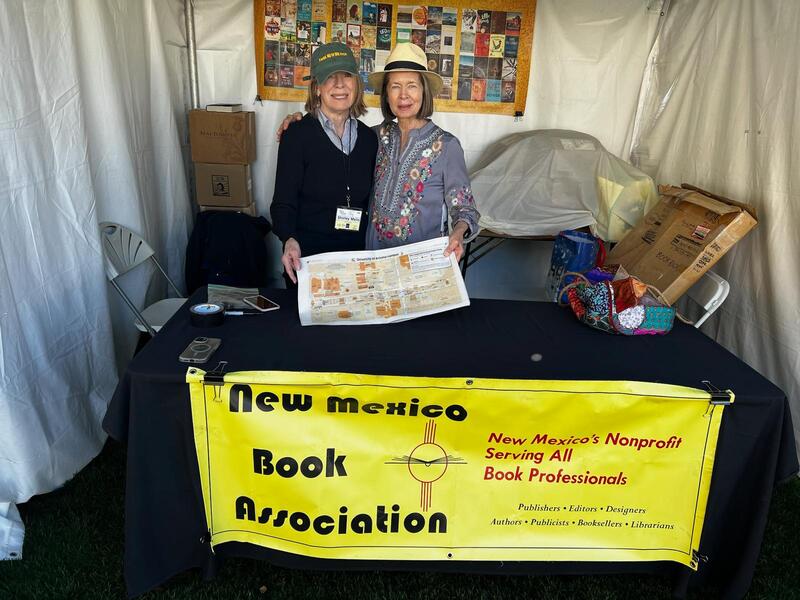


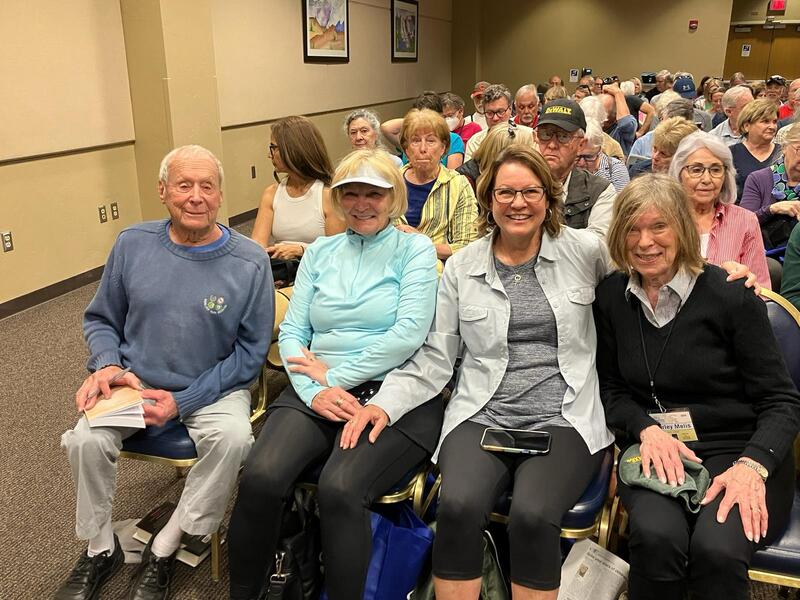


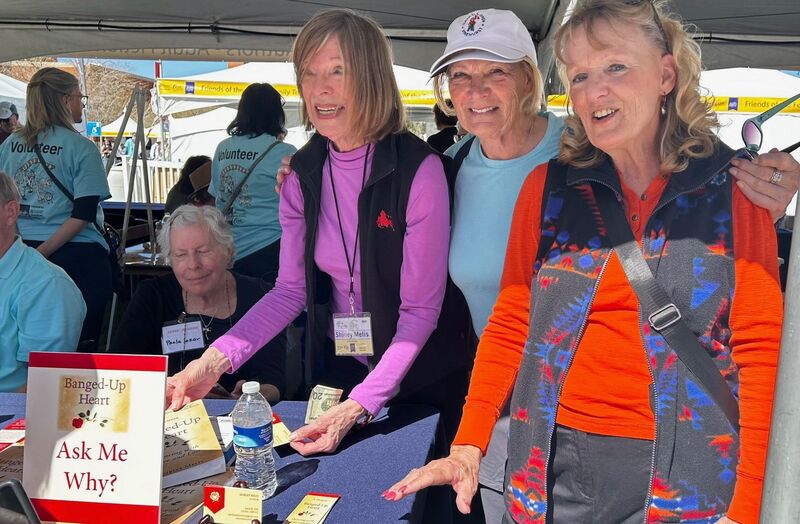

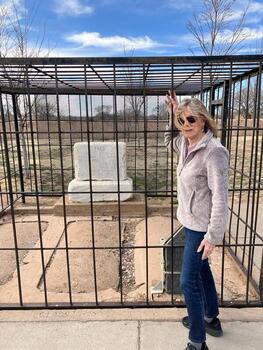

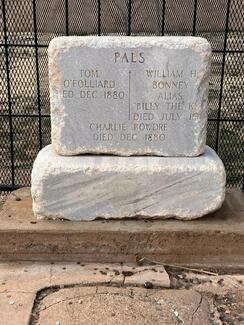



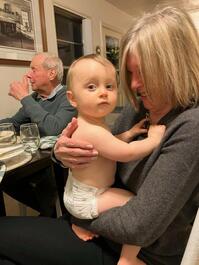

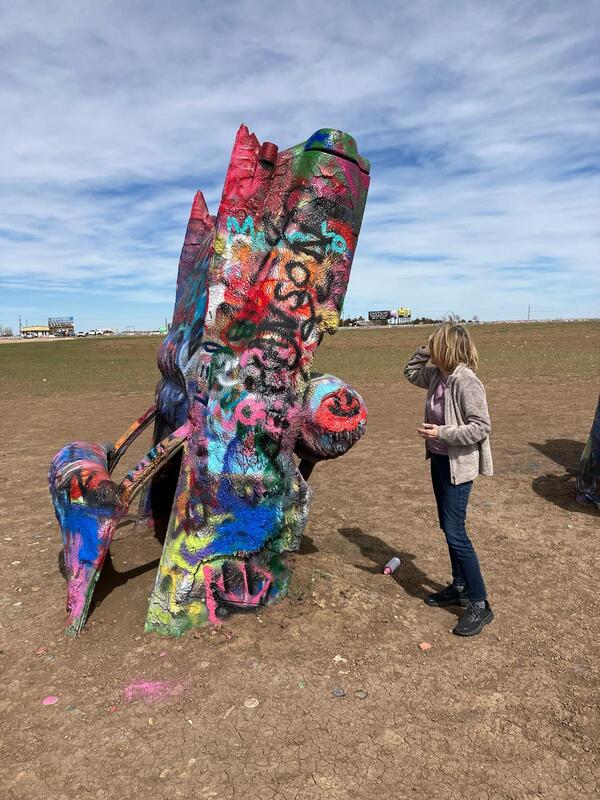


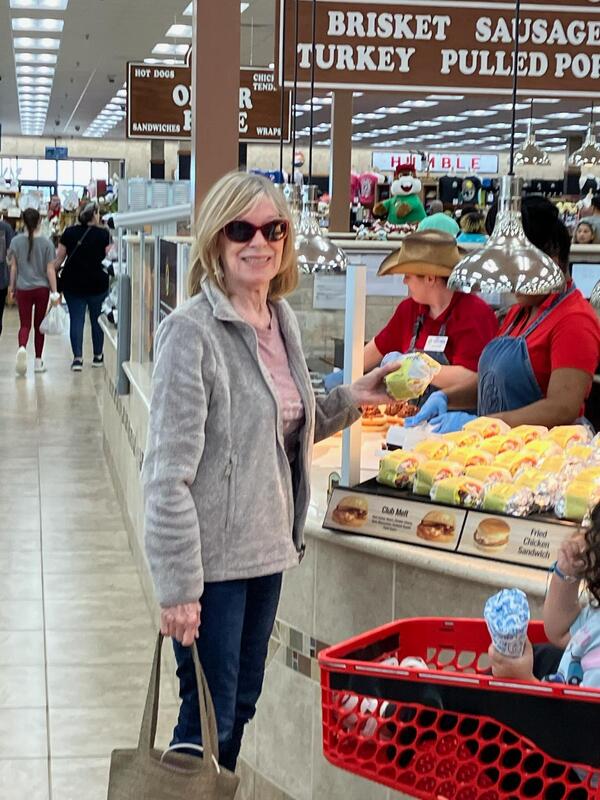
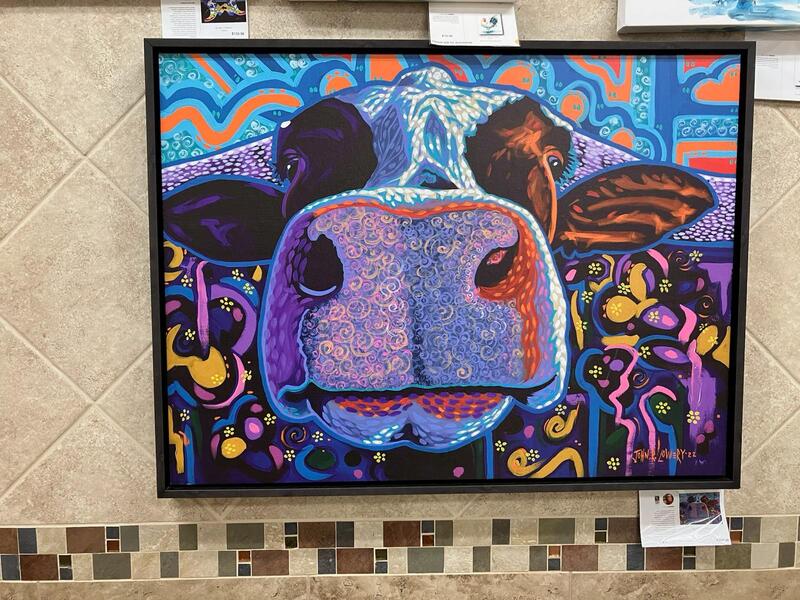
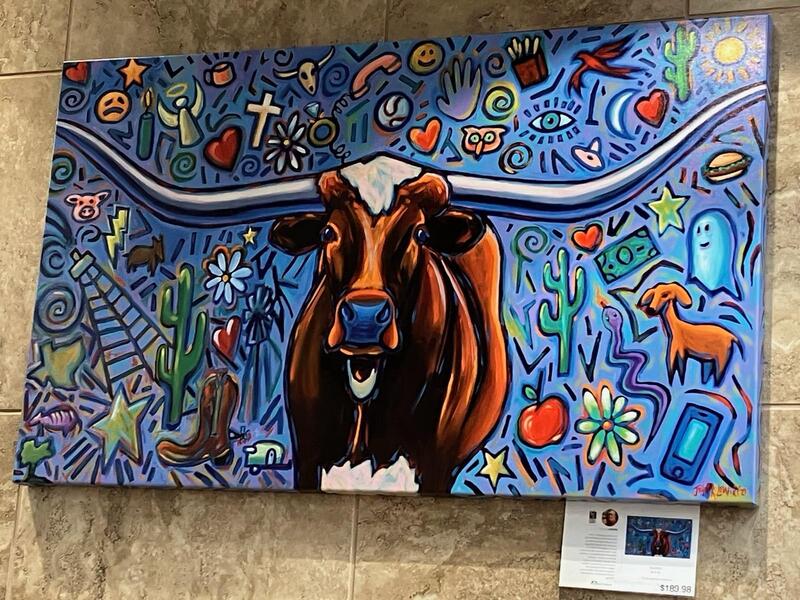





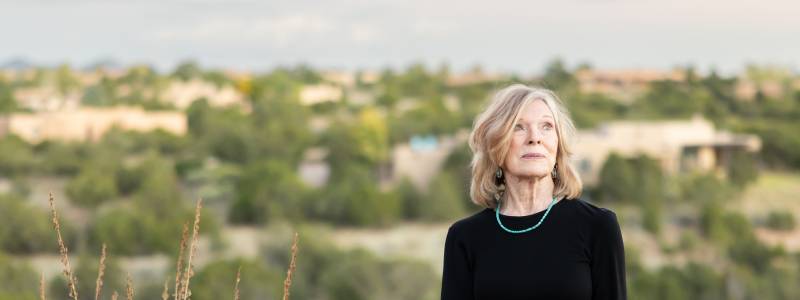





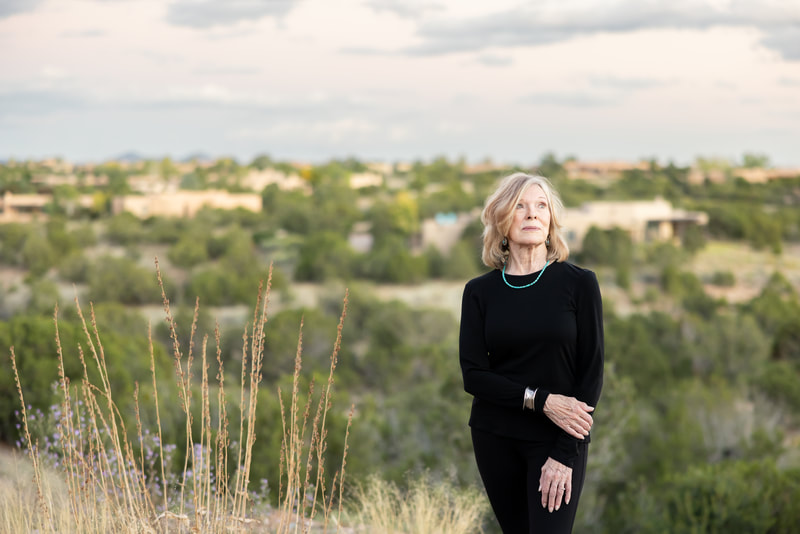



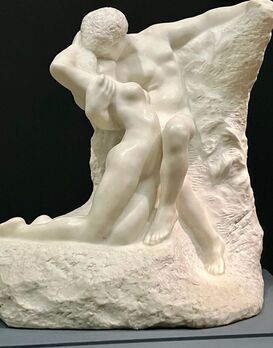
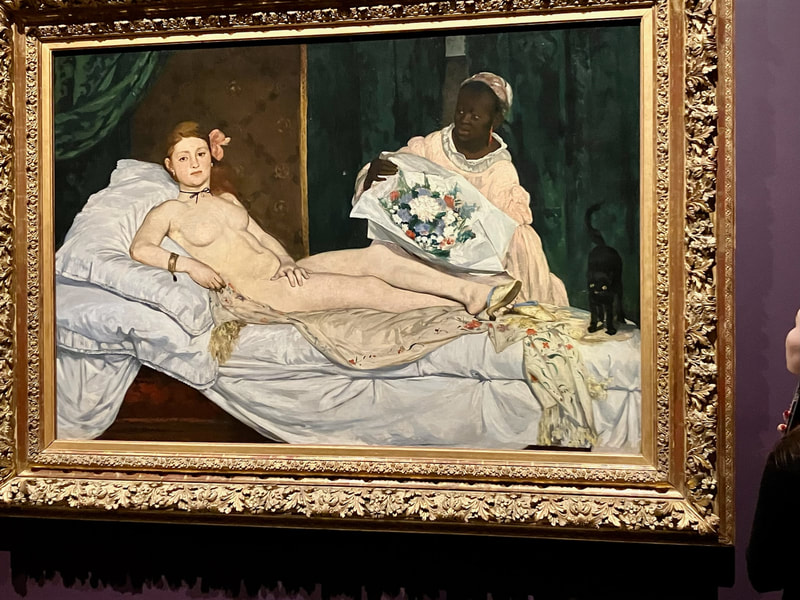


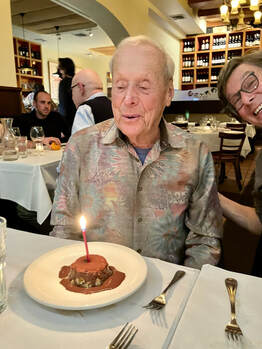










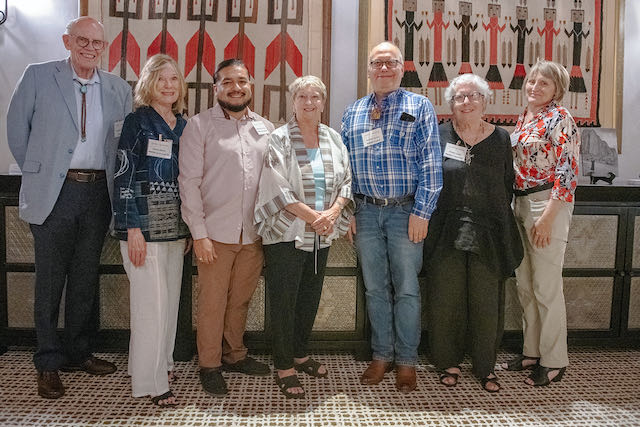
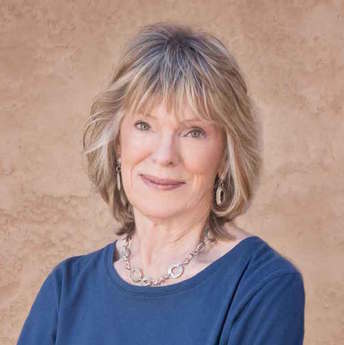
 RSS Feed
RSS Feed